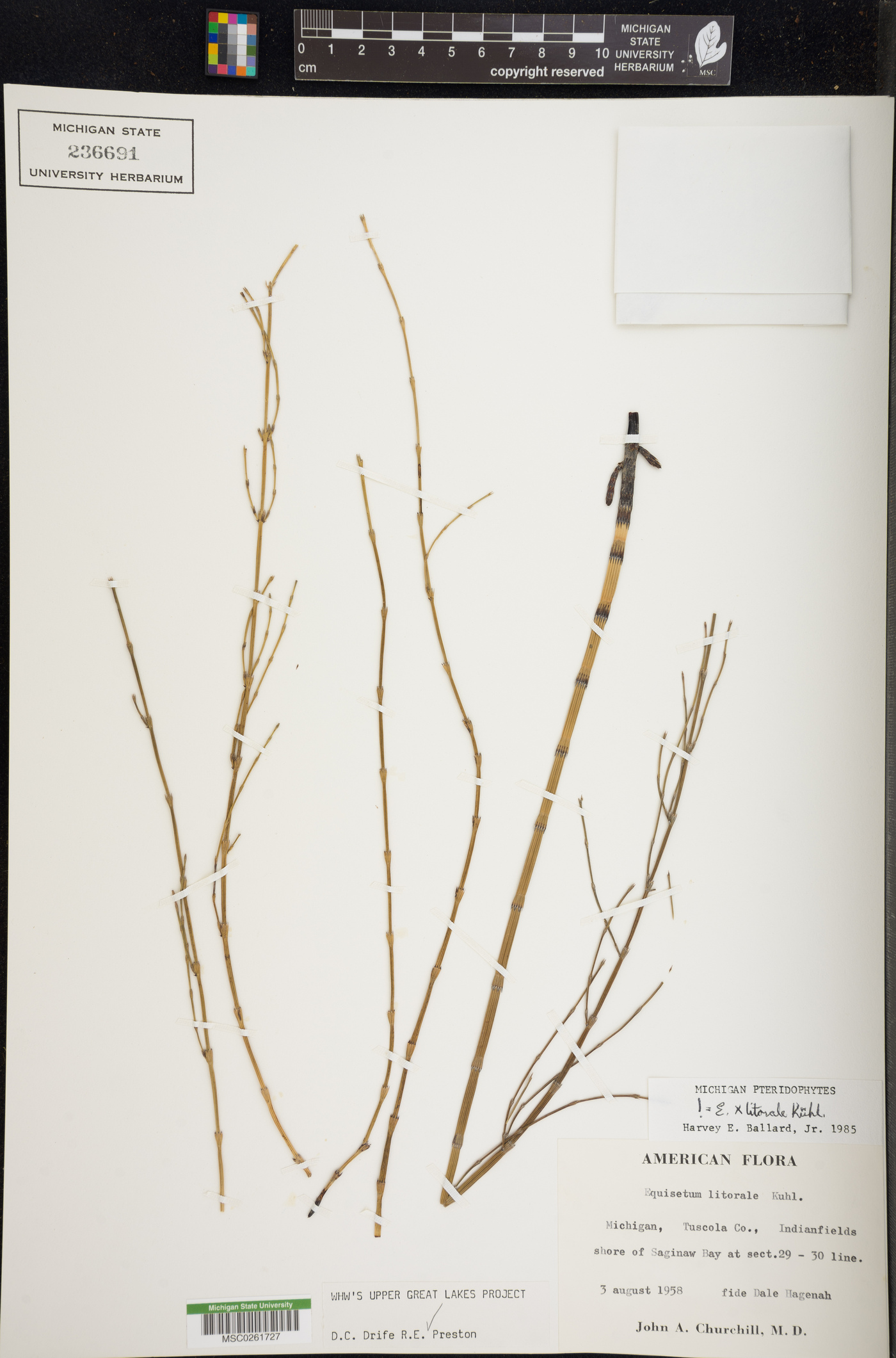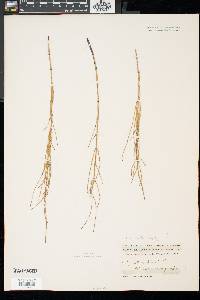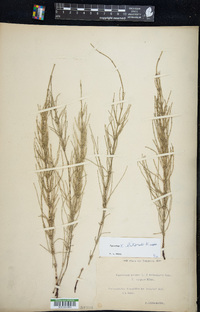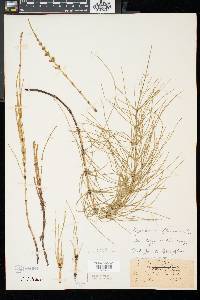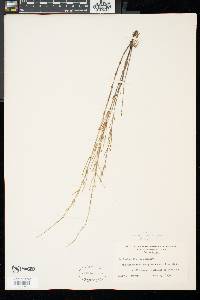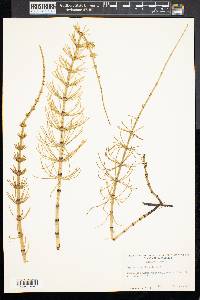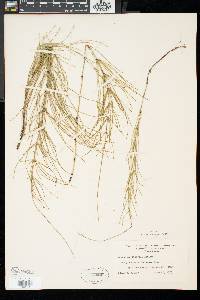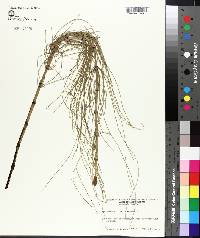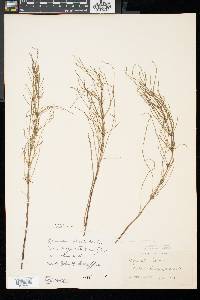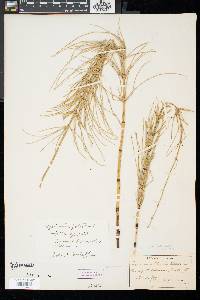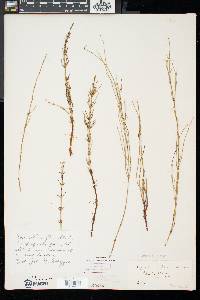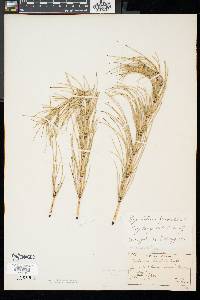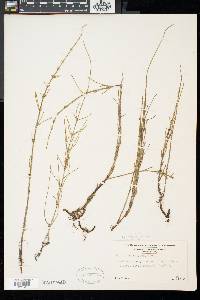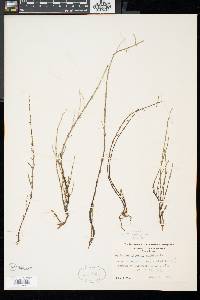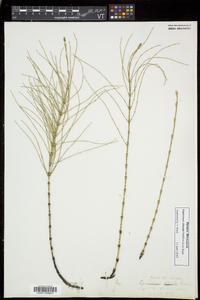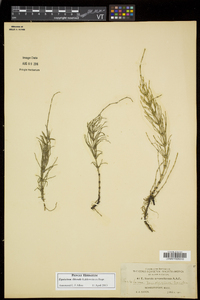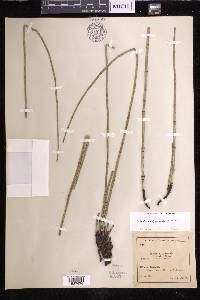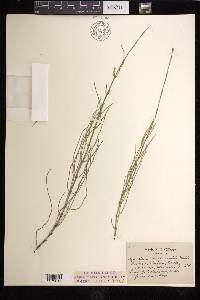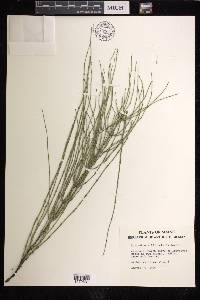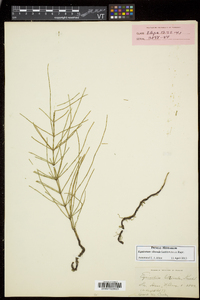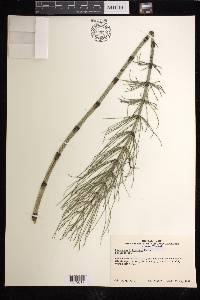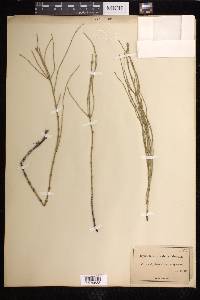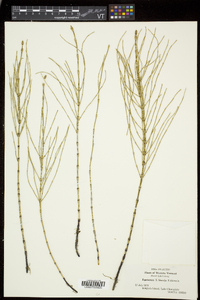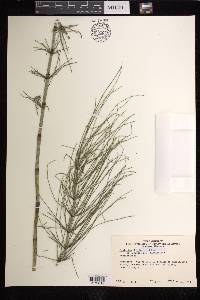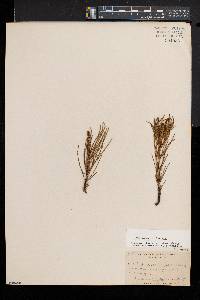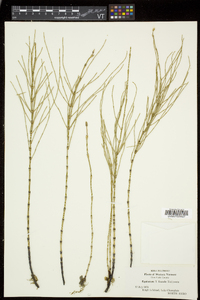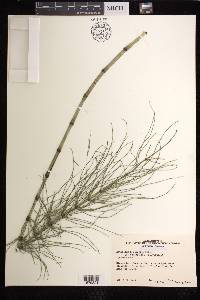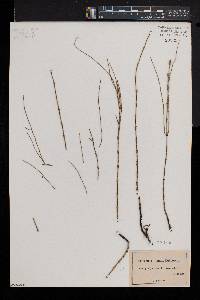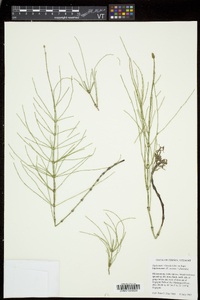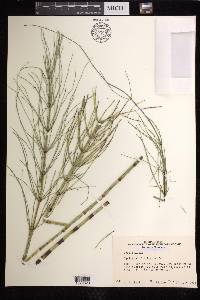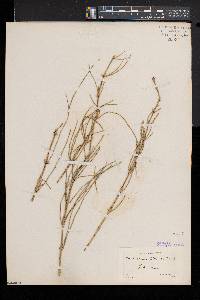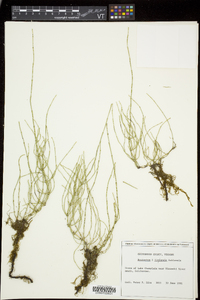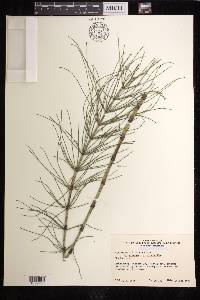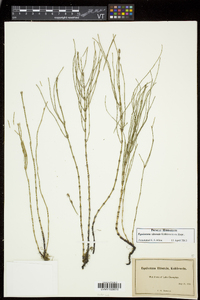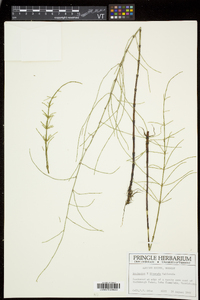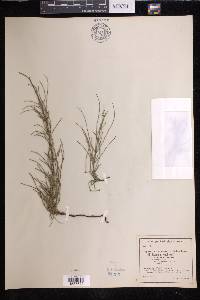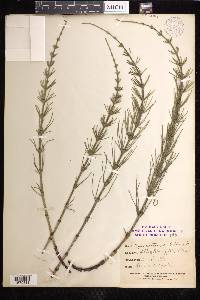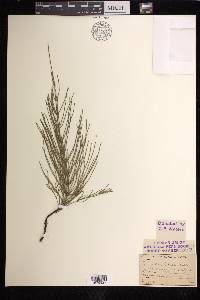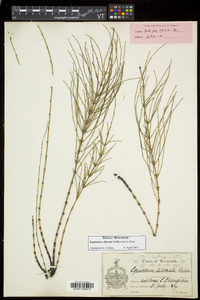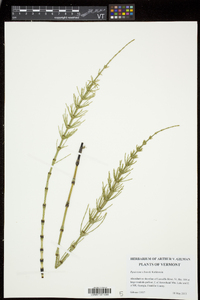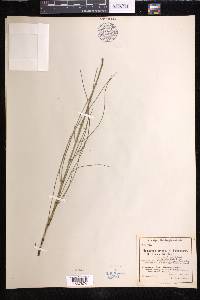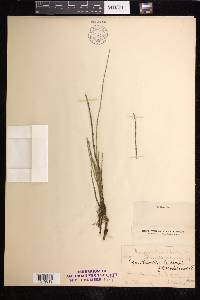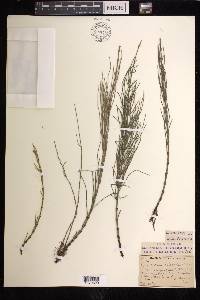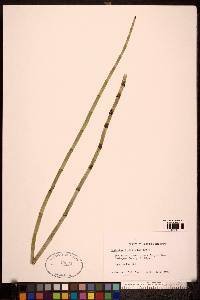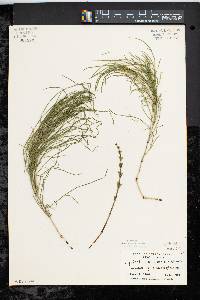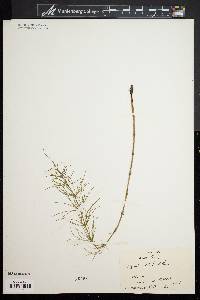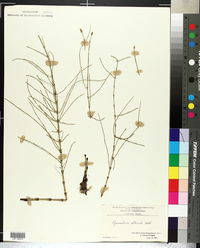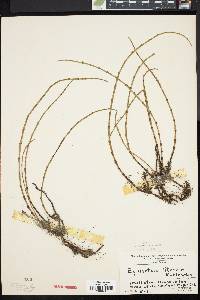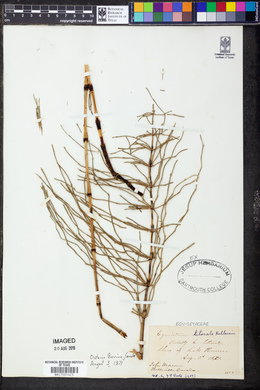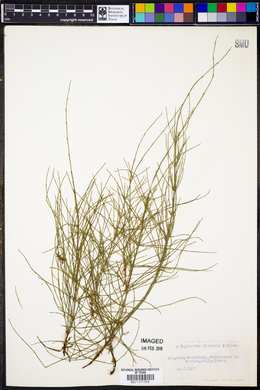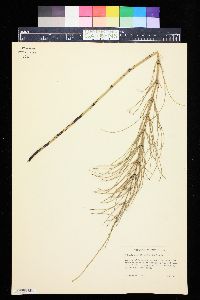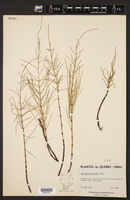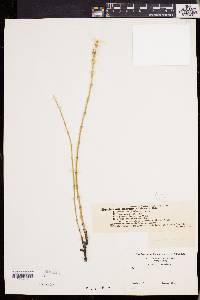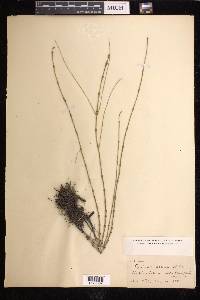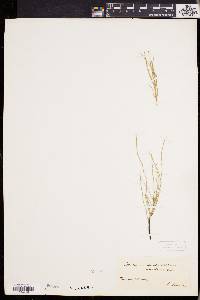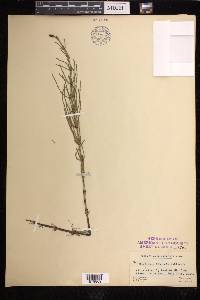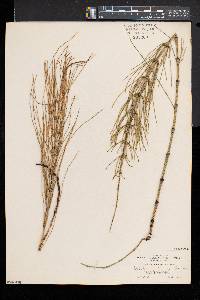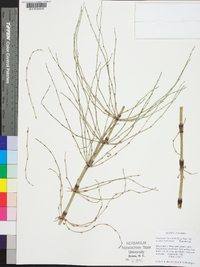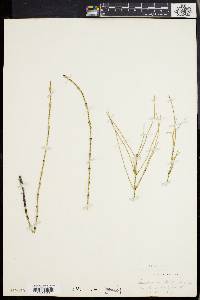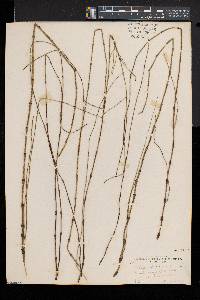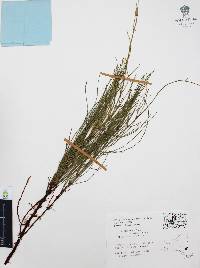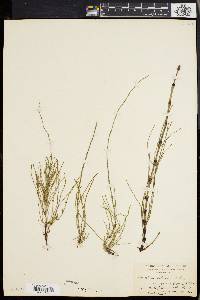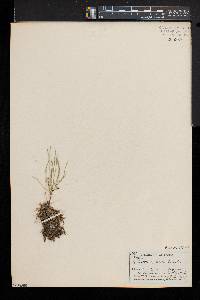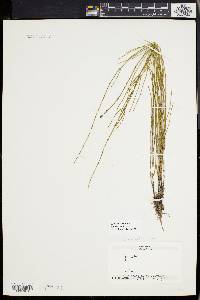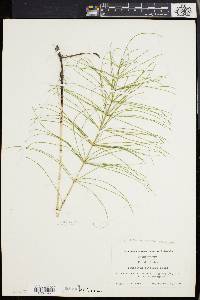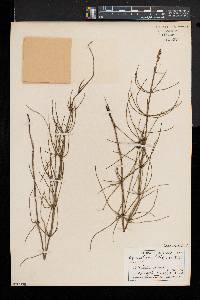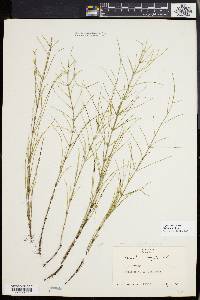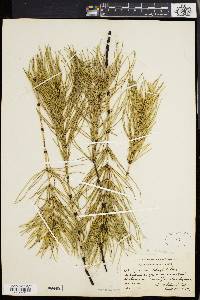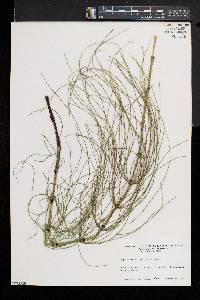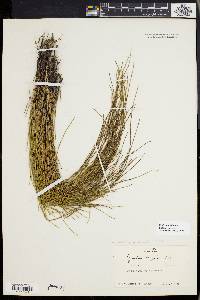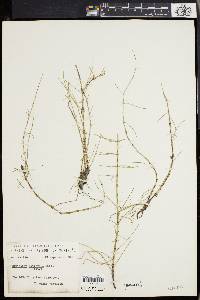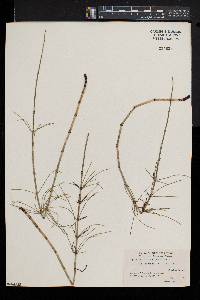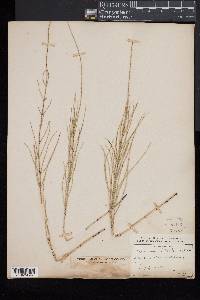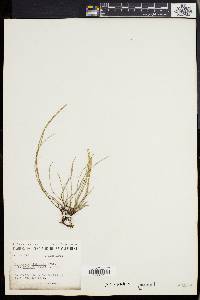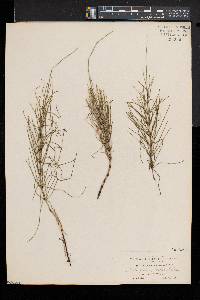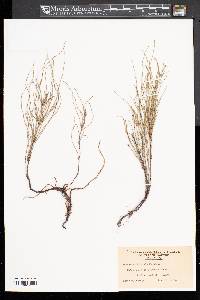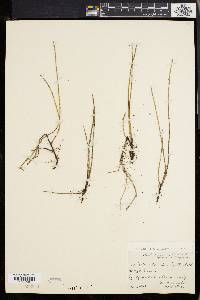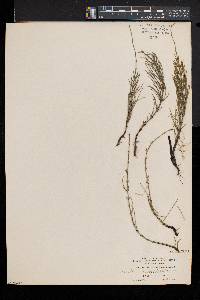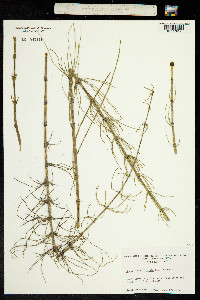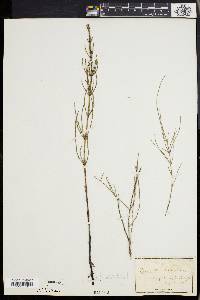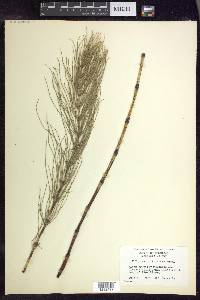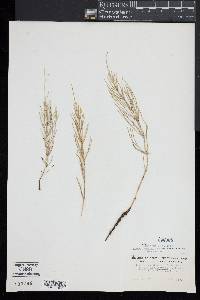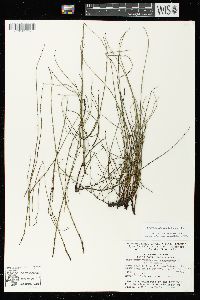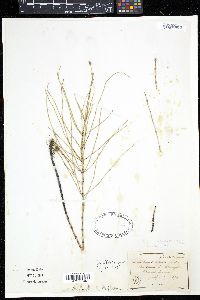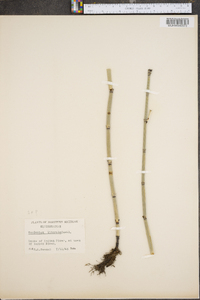Equisetum × litorale
|
|
|
|
Family: Equisetaceae
Hybrid Horsetail
[Equisetum litorale Vict., moreEquisetum x litorale Kühlewein ex Rupr. (pro sp.) [arvense × fluviatile]] |
Aerial stems monomorphic, green, branched or occasionally unbranched, 2--70 cm; hollow center 2/3--4/5 stem diam. Sheaths somewhat elongate, 3.5--8 × 2.5--6 mm; teeth dark, 7--14, narrow, 1--3 mm. Branches mostly from midstem nodes, ascending to spreading, solid; ridges 4--5; valleys channeled; proximal whorls with 1st internode of each branch equal to subtending stem sheath, distal whorls with 1st internode of each branch longer than stem sheath; sheath teeth attenuate. Cones maturing in early summer, but misshapen spores not shed. Ditches, stream banks, wet meadows; 0--1000 m; Alta., B.C., Man., N.B., Nfld., N.W.T., N.S., Ont., P.E.I., Que., Sask., Yukon; Alaska, Conn., Del., Idaho, Ill., Ind., Iowa, Maine, Md., Mass., Mich., Minn., Mont., Nebr., N.H., N.J., N.Y., N.Dak., Ohio, Oreg., Pa., R.I., S.Dak., Vt., Va., Wash., W.Va., Wis., Wyo. Equisetum × litorale is a hybrid between E . arvense and E . fluviatile . It should be expected where the parents coexist. This hybrid has been mistaken for Equisetum palustre ; the solid branches with long first internodes and channeled valleys distinguish it from that species.
Perennial herbaceous fern ally 2 - 70 cm tall Spores: white, oddly misshapen, not spheric or rounded, and never released from spore sacs (sporangia). Stems: one to several, branched or sometimes unbranched, green (dying back in winter), round with hollow center and lengthwise ridges with alternating channeled valleys on outside. The stem joints have distinct nodes, and the stomates are never sunken. Branches: mostly from middle of stem, whorled, ascending to spreading, distinctly jointed at sheathed nodes, rounded with solid center and four to five lengthwise ridges and alternating channeled valleys having stomates two to three wide on either side of channel. The first internode of lowest branches are about equal in length to the subtending stem sheath from which it originates, but the first internodes of the upward branches are longer than the subtending stem sheaths. Sheaths: green with dark teeth, somewhat elongated in face view, 3.5 - 8 mm long, 2.5 - 6 mm wide. The sheaths are actually small, fused, whorls of leaves. Sheath teeth: seven to fourteen, sometimes united in pairs, dark, narrow, 1 - 3 mm long, with long-pointed tips. Similar species: Equisetum x litorale is most similar to its parent E. arvense, but that species has the lowest branch whorls with their first internode longer than the subtending stem sheath from which it arises, plus the spores are green and spheric. Also somewhat similar is E. sylvaticum, but it has reddish sheath teeth, and if branched, the branches themselves branch. Other members in the same subgenus, Equisetum, such as E. fluviatile and E. palustre differ because their unbranched spore-bearing stems are green, and the branches of their branched stems have the first internode shorter than the subtending sheath. When unbranched, E. x litorale is easily distinguished from species in the subgenus Hippochaete because all of those species have green stems, and pointed spore-bearing cones. The more northern species E. pratense is very similar to this hybrid and has often been confused with it, but that species has wider triangular sheath teeth, and the branches are hollow. Habitat and ecology: Apparently not common, but this hybrid should be expected where both parent species coexist, mainly in ditches or along stream banks. Occurence in the Chicago region: native Notes: This plant has the aboveground stems surviving for only one year or even less. This is a sterile hybrid between E. arvense and E. fluviatile and since the hybrid does not produce fertile spores, it can only reproduce vegetatively. Author: The Field Museum |

